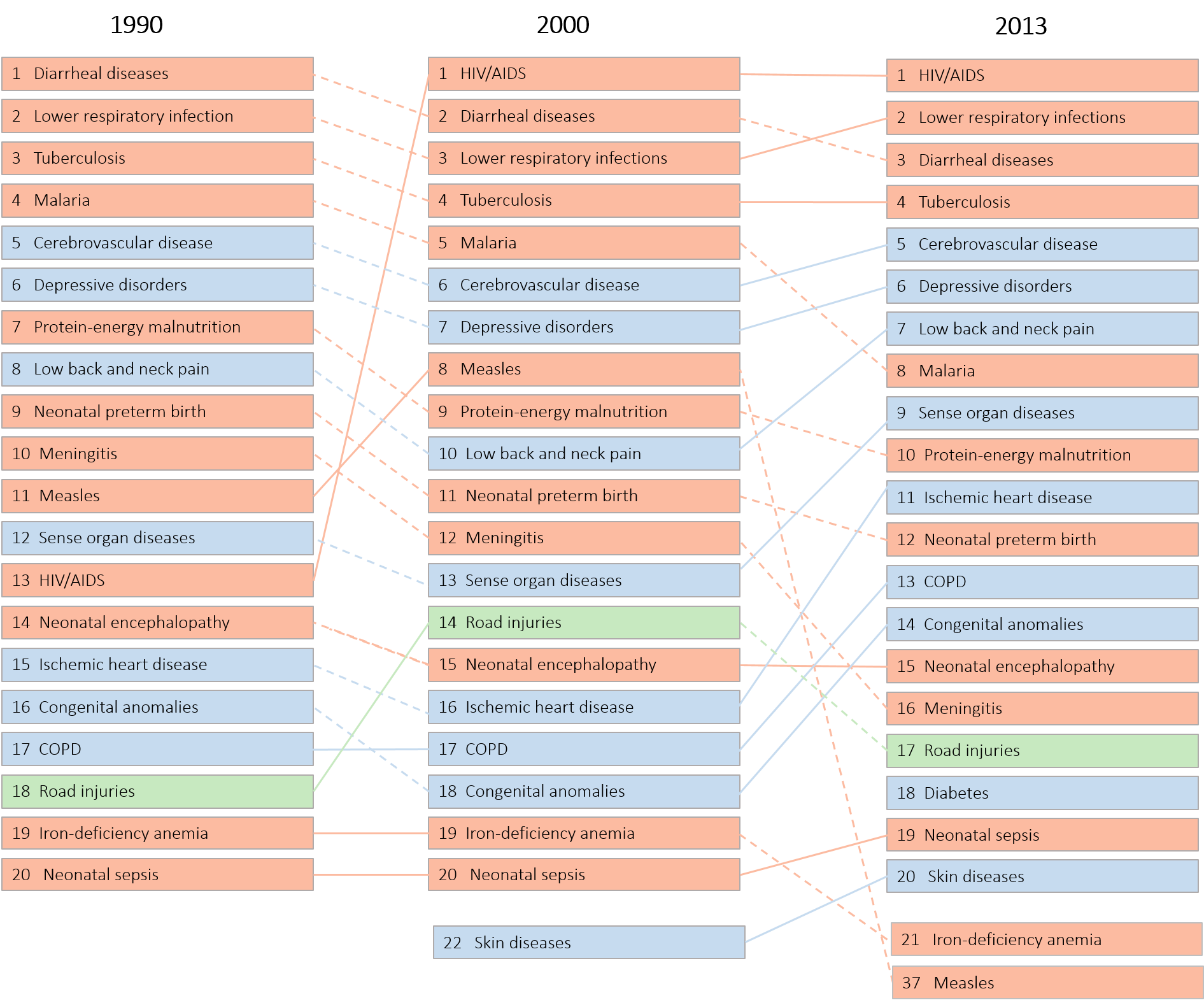This week, India’s Prime Minister Narendra Modi visited Nairobi, announcing that his country would help the Kenyan government build a high-tech cancer treatment center in the capital. At the same time, 65 health practitioners gathered in another part of the city to plan for an even bigger project: tackling all non-communicable diseases (NCDs). As a first step toward this goal, the International Center for Humanitarian Affairs (ICHA) at the Kenya Red Cross and the Institute for Health Metrics and Evaluation (IHME), in collaboration with the Kenya Ministry of Health, produced a report that examines health progress over the past 23 years, as well as the challenges the country faces as its population grows and Kenya’s health landscape shifts.
The report shows that Kenya has made incredible progress over the past 20 years to improve child health and to reduce the burden of leading infectious killers like HIV/AIDS, malaria, and tuberculosis. Kenyan leaders are looking toward the future and aiming to tackle the rising tide of non-communicable disease in their country (Figure 1).
Figure 1: Leading causes of age-standardized disability-adjusted life years (DALYs) per 100,000 population in Kenya, both sexes combined, 1990, 2000, and 2013


In the foreword of the report, Dr. Kibachio Joseph Mwangi, Head of the Division of Non-Communicable Diseases at the Ministry Of Health wrote:
“I take this opportunity to congratulate ICHA and IHME for producing this important piece of work that will be very useful towards strengthening the health system in Kenya.”
Combating NCDs is a priority for Kenya, per its Vision 2030, which is the nation’s long-term goal for elevating Kenya to being a more prosperous, healthier country by 2030. The emerging epidemic of NCDs and related risks factors may reverse Kenya’s recent gains in health unless urgent and deliberate actions are taken. If the burden of NCDs continues to grow unchecked, it will have far-reaching socioeconomic effects in Kenya from households to the health system.
“Sustaining Kenya’s population health gains over the past three decades remains precarious considering the rapid emergence of NCDs,” said Dr. Tom Achoki and Dr. Uzma Alam, co-authors of the report.
Kenya has a long history of using evidence to inform national health policies and programs, and this report and workshop will build on that foundation. “It is our hope that wide dissemination of this report will promote vibrant debate around ways to improve health in the country,” Dr. Kibachio and Dr. James Kisia, Executive Director of ICHA, wrote in the report. “We welcome feedback on the contents of this report and ways towards improving its policy uptake at different levels of the health system.”
With strong political support, GBD estimates for Kenya will help the country’s leaders forge a path to achieve better health for all.